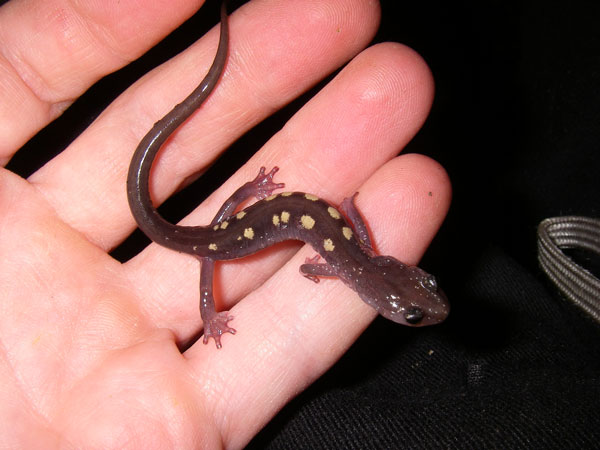By Jordan Beach
When Dr. Zach Felix was studying for his master’s degree at Marshall University in West Virginia, he became curious about the yellow-spotted Wehrle’s salamander, convinced there was more to learn about the amphibian.

Felix, associate professor of biology, along with several alumni, recently worked to provide evidence that identified a new species of salamander, one that, since the 1980s, was thought to simply be a variant of Wehrle’s salamanders.
Samantha Searcy ’11 traveled with Felix to Tennessee on a trip to collect the first tissue samples. Jesse Rigsby ’11 helped perfect the photography required to collect morphological data. In addition, Felix’s Evolutionary Biology students have been exploring this group of salamanders for eight years. He had been using part of this data set as a major lab report for the class, so his students have used some of the same genetic sequence data used in the manuscript to write their major lab report for the semester.
All this research and more provided evidence that the yellow-spotted populations of Wehrle’s salamanders and other members of the group had more than a couple different genes variations—they were able to show that the genomes of the yellow-spotted populations differed compared to other Wehrle’s salamanders at hundreds of thousands of places. Felix and his colleague also presented evidence that the yellow-spotted populations were shaped differently than other Wehrle’s salamanders.
“These pieces of evidence told the story that these yellow-spotted populations had been reproductively isolated from other Wehrle’s salamanders for millions of years and that they were adapted to their own environment and were deserving of their own name,” said Felix.
That name became Plethodon pauleyi, also known as the yellow-spotted woodland salamander. Felix and co-author of their research paper, Jessica Wooten of Piedmont College, chose the scientific name to honor their mentor Thomas Pauley from Marshall University, who Felix said is a “wonderful man and has devoted life outside his family and church to protecting salamanders.” The article, published in the international journal “Zootaxa,” was also co-authored by Todd Pierson of the University of Tennessee and Carlos Camp, also of Piedmont College.
This is not the first time Reinhardt’s biology program played a role in discovering new species. Dr. Aliyah Davenport and Keith Ray are trained systematists, those who study and describe biodiversity. Davenport described a new species of plant from the new world tropics, as well as a new genus of plants, something Felix says very few people have done. Ray has studied the evolutionary relationships and taxonomy of fish and named a new species of armor-plated catfish.
Felix hopes that Reinhardt’s biology program will be able to take advantage of the University’s unique location to discover more, while providing students with experience in their field.
“The biology program has talked about how we live in an amazing area to discover new species and how this would be a great niche for us to fill as a biology program,” said Felix. “We could have students out their doing surveys and combining through their results for promising new species.”

